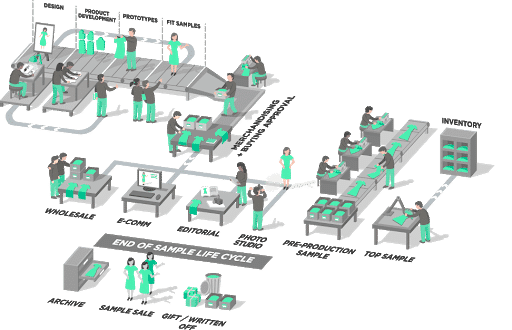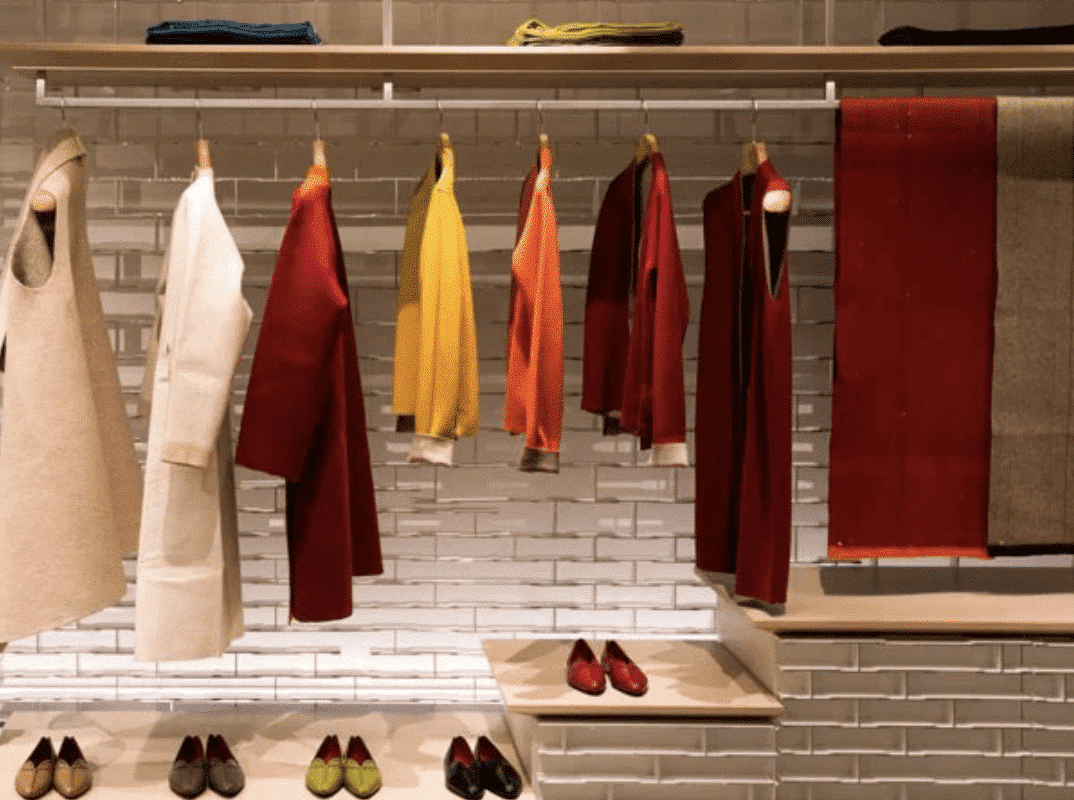Currently, fashion brands are discovering new ways to present their collections and campaigns. They are considering YouTube, Instagram, and new digital platforms and formats such as London Fashion Week, to showcase their collections to fashion buyers and curious customers. But, did you know that these “presentations” are just one part of the launch-to-market process? Before a garment can be shown on the runway or in a collection presentation, there are multiple steps within the product launch plan, involving sample management and digital asset management. This plan takes months to execute, creating an opportunity for fashion software to ensure a smooth flow. But, let’s start by asking ourselves:
In this article you’ll learn…
What is a Product Launch Plan?
A Product Launch Plan is a documented summary of ideas, activities, and processes a company uses to release its product in the market, which is known as 'Go-to-Market'. It is a strategic plan that helps streamline the process to improve efficiency and to ensure that the collection is on time.
For a new fashion collection, the Go-to-Market timeline can vary between 3-6 months, and with smaller collections dropping in tighter timeframes, brands are having to learn new ways to stay ahead of the curve.
Let’s start by reviewing the 4 phases involved in a Product Launch Plan to get a better understanding:

Pre-Development Phase
After a collection is designed, the Design & Merchandising teams may disagree on which styles should be produced into samples. Designers could gravitate towards their favorite pieces while the Merchandising team may prefer to focus on trend forecasting and the pricing of a garment.
Once a decision is made on the final sample assortment, orders are placed for the fabrics, and the designs and patterns are sent to a factory to be produced.
Development Phase
Within a factory, many different parties, such as fabric cutters, embroidered, and sewers, will work on a single sample. Samples usually pass through many different hands before they arrives at one of the final steps - a cleaning process to see how well it washes.
Post-Development Phase
Once production is finished, the prototype sample is sent back to the Design and Merchandising teams for inspection and the fit model tries on the sample.
If changes are needed, notes are shared with the factory, and after several rounds of edits, the Design and Merchandising teams settle on the final sample that can be presented to the public.
The final set of samples are displayed at Market Week, where editors and buyers have the chance to review the collection, helping identify which samples should be ordered for their market. This usually happens before runway shows or buyers place orders.
After Market Week, the fashion brand usually orders the following number of samples to begin the promotion of their new collection:
- 2 sets for Sales Teams
- 1 set for E-Commerce/Photo Studio
- 1 set for Public Relations/Marketing
- 1 set for Product Development
With the sample sets ready, fashion shows, collection presentations, and showroom visits begin.
End of a Sample Cycle

Once the collection is launched, the samples are set aside, ending up in various places like the archives of the fashion brand, sample sales, or they are simply lost. Overall, sample creation is crucial to the product launch plan and gives insights into what garments work, what will sell, and what won’t.
Throughout the four product launch phases, there are multiple sets of samples moving from Design and Merchandising to Sales, E-Commerce, and Public Relations/Marketing. With the constant movement, samples could get lost, get stuck in customs and miss sales, editorial, and photo shooting opportunities due to time-to-market delays.
How can fashion brands ensure that the Product Launch Plan goes smoothly with any errors or delays?
Fashion brands can increase efficiency and minimize delays across the product launch plan with Enterprise Sample Management. Using this, brands can streamline their sample workflow across different teams by first implementing a tracking process using individual barcodes or RFID tags on each sample. This will give full transparency on the sample’s location, and interactive dashboards give a great overview of inventories, deliveries, and any outstanding samples.
Sample notes can be added so that each team has up-to-date information and by tracking the movements of the samples, fashion brands will be able to reduce any opportunity losses, physical sample losses and potentially minimize the number of sample sets produced.
With the rise of digital, what about digital sample management?
Fashion brands can also maximize the usage of their digital samples using Digital Asset Management. With this, brands can share their digital images with stylists, editors, and buyers. Then, industry professionals can request samples and download product images. Thus, this could potentially reduce the inventory of samples needed and minimize overall Go-to-market time.
With the changing fashion industry, Enterprise Sample Management and Digital Asset Management are two applications in the Launchmetrics Brand Asset Management solution, focused on maximizing the usage of all assets. Together, they create the ultimate fashion software solution, increasing productivity and efficiency within the Product Launch Plan.

